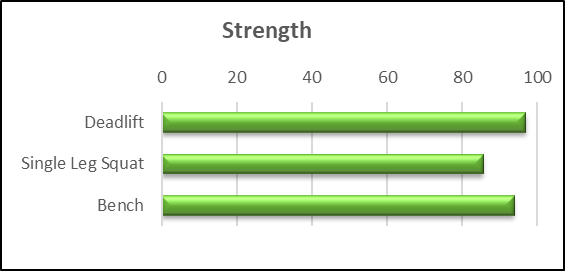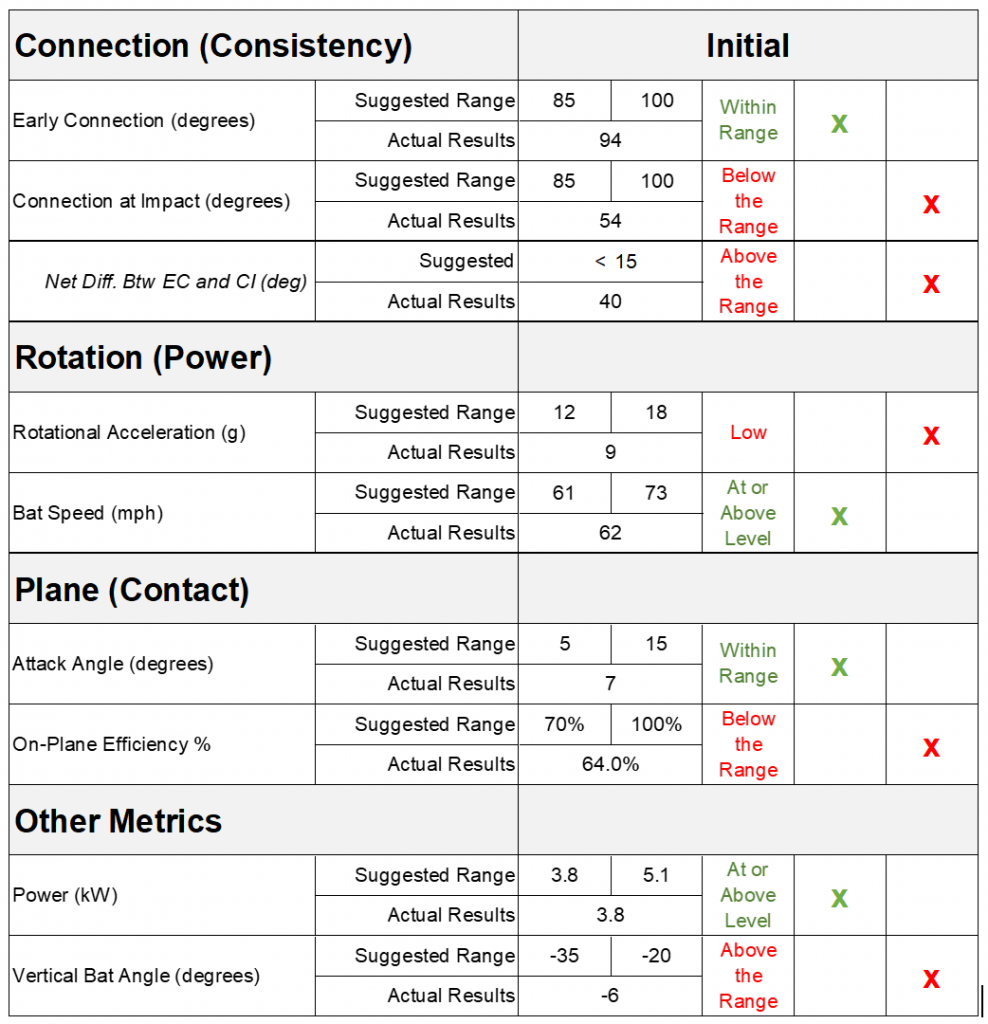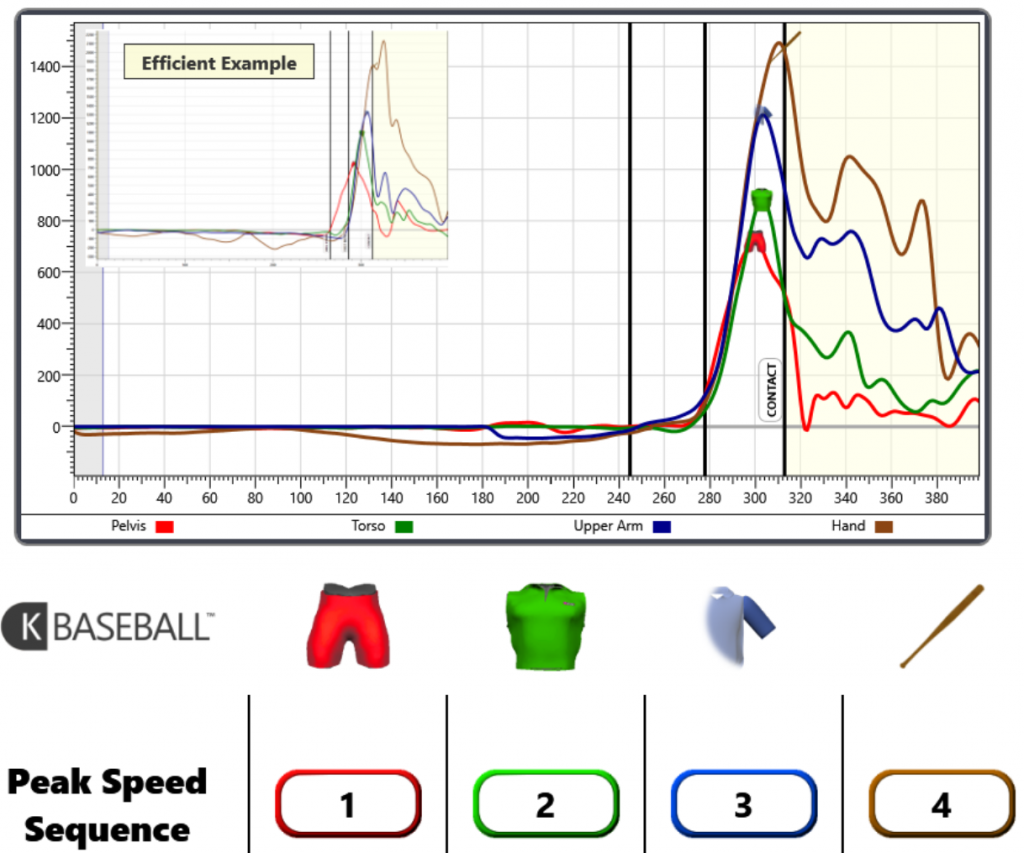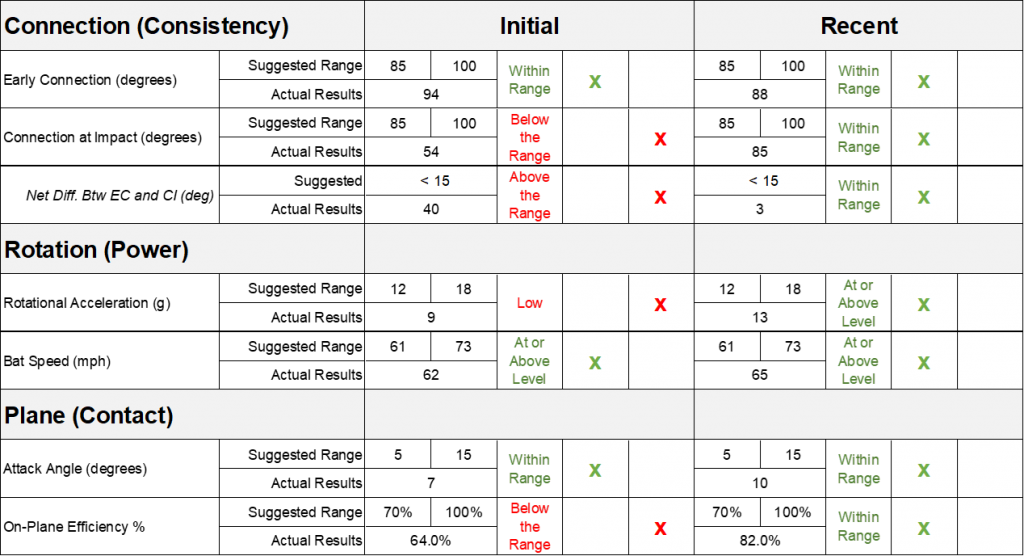
Rising College Sophomore, Jackson Kammen joined us this summer for the 3-month college hitting development program. Jackson, a catcher at Gettysburg College in Pennsylvania, had just finished his freshmen year. At 5’9” and 182 lbs. he is strong and physical. His plan for the summer was to increase his bat speed and exit velocity and generally improve his contact at the plate. He began his summer training in May, and needless to say, a lot has already changed since. Jackson’s bat speed has increased 3 mph while his exit velo now at 91-93, has also increased nearly 5-6 mph.
How did he do it?
Jackson started his summer with us similar to every other athlete in our programs with a thorough assessment, which included:
-
- Lean Body Mass Evaluation
- Movement Screen
- Strength and Power Testing
- Video Review and Analysis
- Blast Motion Review
- K-Vest Analysis
The summer college program is only 3 months. So, our time is somewhat limited. In Jackson’s case, his assessment showed that he was already relatively strong in the weight room. In addition, his height to weight ratio was 2.6x, which was well within our suggested range of 2.5-3.0x for high performance athletes. His Body Fat Percentage was 12%, also well within our suggested range. Below is a summary of Jackson’s recent strength metrics.

Blast Motion Metrics
Jackson’s initial Blast metrics are summarized below.

You can see that a few of his metrics were below or outside suggested ranges. This was especially true of his Contact-related metrics, including Connection at Impact, Vertical Bat Angle and On-Plane efficiency. Let’s take a look at what these mean in regard to the swing.
Connection at Impact (CI) – The angle formed between the bat and the t-spine at contact, generally looking for a number between 85 and 100 degrees. Jackson’s was 54 at his initial assessment which pointed to a flat bat at contact. Consequently, the difference between his Early Connection and Connection at Impact was 40 degrees versus a more manageable <15 degrees.
Vertical Bat Angle (VBA) – The angle of the bat versus the horizontal plane at contact. Depending on the location of the pitch, this angle can range between -20 and -35 degrees. Jackson’s VBA was -6 degrees, once again pointing to a flat bat at contact.
On-Plane Efficiency % (OPE) – The percentage of time the swing is on the same plane as the angle at contact. Generally looking for 70% or more. Jackson’s OPE was 64%, lower than desired for consistent contact.
Generally we felt that the net difference in his Early Connection and his Connection at Impact combined with his Vertical Bat Angle, can be affecting his ability to make consistent contact despite his above average strength levels. While there are many things that can cause this much variance in his connection through the swing, a few big players stuck out in his assessment as well as his video analysis. Let’s take a look.
Assessment / Movement Screen
It is quite common for athlete’s disconnects to be related physical deficiencies that we identify in our initial assessment. In Jackson’s case we identified four topics that may be affecting his ability at the plate.
-
- Insufficient Core Control
- Insufficient Core Control / Hip Flexor
- Insufficient Hip Mobility / Stability
- Insufficient Shoulder IR – Right
Insufficient Core Control – Even though Jackson possessed a good amount of strength in his initial assessment, he did present with Insufficient Core Control. This was more than likely negatively affecting not only his ability to hold good connection through his rotation in the swing, but affecting his ability to better transfer that lower half strength and power into higher bat speed metrics as well. Some Bird Dog w/ Trap Raise can help…
Bird Dog w/ Trap Raise
Insufficient Back Hip IR – In addition to re-positioning Jackson’s back foot, getting back some hip IR was definitely in order. The Rotary 6-cone Drill is made for this…
Rotary 6-Cone Drill
Video Analysis
In a sequential movement such as hitting, events early in the movement can create issues later in the swing. In Jackson’s case, from a mechanics standpoint, the primary disconnects that were primary contributors to events downstream were related to his “Load” and his ability to not “Lose the Barrel”, which we believe were robbing him of better numbers on Blast contact metrics highlighted above in addition to his Rotational Acceleration, Bat Speed and Power. This is especially true for a guy with such a good amount of strength on hand.
Below are some definitions to help explain what these disconnects are and how they may be affecting Jackson’s on-plane efficiency, rotational accel and bat speed.
-
- Rear Hip Load – Regardless of stance style, the swing begins and fires in a spring around the rear hip socket. Knees should be inside the ankles from stance and continue throughout the stride in order to carry tension in the lower body throughout the stride to eventually be released into the upper body. Jackson’s lack of efficient hip IR was making it difficult to effectively create that coil in order to stay grounded in the back leg and rotate more efficiently. We prescribed some good hip mobility work as well as a coil drill in the cage.
Coil Drill
-
- Losing the Barrel – When the top hand gets outside the bottom hand prior to toe touch, it affects the relationship between the bat and the front forearm. This can create an early loss of position and reduce the player’s ability to “whip” the bat , robbing him of bat speed which is “pure gold” for all things hitting. In Jackson’s case we prescribed a combination of t-spine extension / rotation as well as some drill work.
Bench T-Spine Mobility
Ty Cobb Drill
K-vest (Posture) Assessment
K-vest is a motion capture technology which allows you to measure your posture and movement patterns of the upper body throughout the swing from first move to heel strike through to contact.
Jackson’s initial results demonstrate relatively good overall postural patterns with a solid 1-2-3-4 kinematic sequence which allows to efficiently build angular velocity up the chain.

Recent Re-evaluation / Assessment
With such good sequencing and strength on hand, this seemed more and more like issues related to loading, core strength and upper body stability. Our plan for Jackson generally revolved around strengthening his core and cuff stability. Getting back some much-needed hip IR would also help him load his rear hip more efficiently in order to improve his contact metrics.

The results speak for themselves. His Blast metrics have improved significantly and are now within the suggested ranges.
His Connection at Impact is now north of 80 degrees and the differential between EC and CI is less than 3 degrees. His On-Plane % is now over 80%, which is excellent. His bat speed and rotational acceleration have also improved. But most importantly, his exit velo has jumped 5-6 mph into the 90s. This is generally due to a combination of increased bat speed and better overall contact metrics, which allows for a more direct transfer of power at contact.
Great job Jackson!
Keep up the hard work and good luck back at Gettysburg.
By Nunzio Signore, Andrew Pezzutto and Bahram Shirazi
You live too far to train with us in-house at RPP? You can now train with us on a REMOTE basis.


